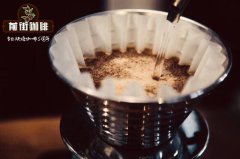Coffee beans semi-washing method steps Coffee semi-washing method features an article let you understand seconds

Professional coffee knowledge exchange more coffee bean information please follow the coffee workshop (Wechat official account cafe_style)
Introduction to the process of Qianjie-semi-washing treatment
Semi-washing treatment (Semi washed) can be said to be the combination of sun-drying and water-washing. The idea is to use less water than water washing to produce coffee with a cleaner flavor and a thicker taste than the sun washing method, which is popular in Indonesia, Manning and other places, and Brazil has also begun to use semi-water washing in recent years.
Step 1: filter
As with other treatments, coffee cherries need to be screened first. If you put the picked coffee cherries in the pool, the ripe fruit will precipitate to the bottom of the pool, while the unripe fruit will float on the surface. Coffee farmers need to screen out the immature fruit first.
Step 2: remove the peel and pulp
The procedure is the same as the washing method, using a special machine to remove the peel and pulp, leaving only the coffee beans wrapped in the endocarp, but at this time, there is still a small layer of colloid on it.
Step 3: remove pectin
Use a pectin scraping machine (Demucilager) to remove the attached pectin, which uses only a small amount of water compared to the washing method.
Step 4: air drying
Take out the coffee beans with a smooth surface and dry them outdoors until the water content is reduced to 12%.
Flavor characteristics
Semi-washed coffee not only has the thick flavor and sweetness of sun beans, but also has the clean, soft but not insipid taste of washed beans.
Knowledge: although coffee beans are called beans, they are actually the seeds of the fruits of Rubiaceae (coffee trees).
In short: Qianjie is a coffee research hall, happy to share the knowledge about coffee with you, we share unreservedly just to make more friends fall in love with coffee, and there will be three low-discount coffee activities every month. The reason is that Qianjie wants to make more friends drink the best coffee at the lowest price, which has been Qianjie's tenet for 6 years!
END
Important Notice :
前街咖啡 FrontStreet Coffee has moved to new addredd:
FrontStreet Coffee Address: 315,Donghua East Road,GuangZhou
Tel:020 38364473
- Prev

Introduction to the process of washing coffee and beans with bright and clear acid
Professional coffee knowledge exchange more coffee bean information please follow the coffee workshop (Wechat official account cafe_style) front street-washing treatment process introduction every coffee production season, farmers will coffee fruit after picking, collected into a fixed open-air sink for storage, the sink is filled with water, branches rotten leaves and density screening. Let's take a look at the process of washing treatment.
- Next

How many kinds of coffee beans are there? comparative introduction of three processing methods of coffee beans
Professional coffee knowledge exchange more coffee bean information please follow the coffee workshop (Wechat official account cafe_style) Qianjie-Coffee treatment introduction 1. Drying method is a traditional processing method of coffee beans, the fruits need to be dried in the natural sun after harvest, and some mechanical drying is carried out at the same time. The process is as follows: harvest sun field (sunlight exposure) sheller (remove pulp, etc.)
Related
- Beginners will see the "Coffee pull flower" guide!
- What is the difference between ice blog purified milk and ordinary milk coffee?
- Why is the Philippines the largest producer of crops in Liberia?
- For coffee extraction, should the fine powder be retained?
- How does extracted espresso fill pressed powder? How much strength does it take to press the powder?
- How to make jasmine cold extract coffee? Is the jasmine + latte good?
- Will this little toy really make the coffee taste better? How does Lily Drip affect coffee extraction?
- Will the action of slapping the filter cup also affect coffee extraction?
- What's the difference between powder-to-water ratio and powder-to-liquid ratio?
- What is the Ethiopian local species? What does it have to do with Heirloom native species?

